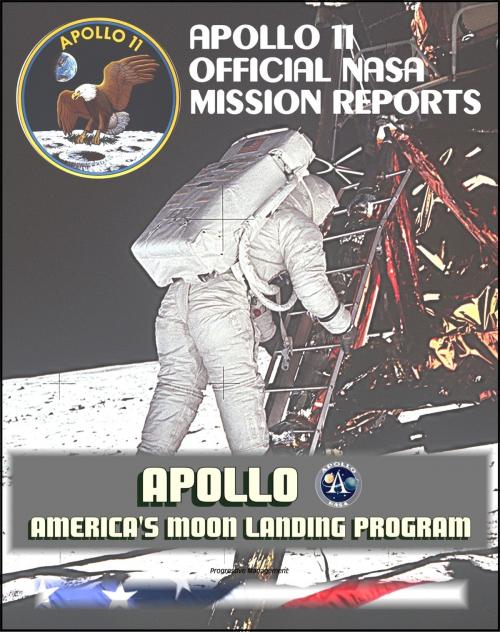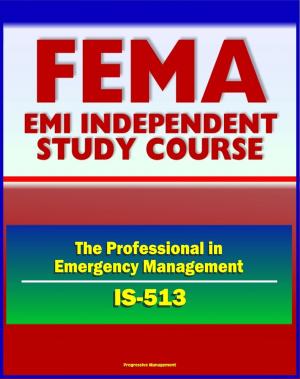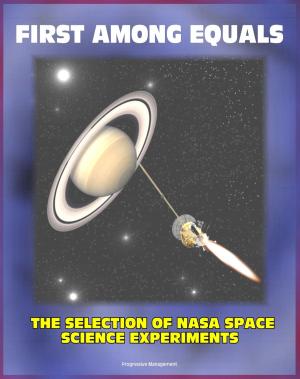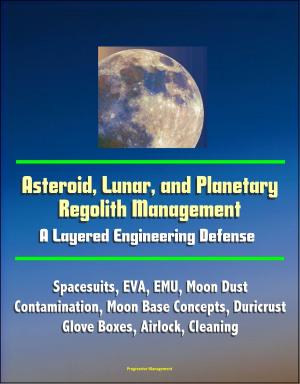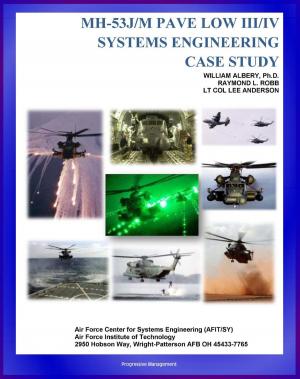Apollo and America's Moon Landing Program: Apollo 11 Official NASA Mission Reports and Press Kit
Nonfiction, Science & Nature, Science, Physics, Astronomy, History, Americas| Author: | Progressive Management | ISBN: | 9781465968265 |
| Publisher: | Progressive Management | Publication: | October 11, 2011 |
| Imprint: | Smashwords Edition | Language: | English |
| Author: | Progressive Management |
| ISBN: | 9781465968265 |
| Publisher: | Progressive Management |
| Publication: | October 11, 2011 |
| Imprint: | Smashwords Edition |
| Language: | English |
Four comprehensive official NASA documents - converted for accurate flowing-text e-book format reproduction - chronicle the historic mission of Apollo 11, which accomplished the first landing of humans on the moon in July 1969. Two technical mission reports, the Manned Spacecraft Center (MSC) Apollo 11 Mission Report and the NASA Headquarters Mission Operation Report (MOR), provide complete details about every aspect of the mission.
Apollo 11 MSC Mission Report: Mission description, pilots' report, lunar decent and ascent, communications, trajectory, command and service module performance, lunar module performance, extravehicular mobility unit performance, the lunar surface, biomedical evaluation, mission support performance, assessment of mission objectives, launch vehicle summary, anomaly summary (CSM, LM, government furnished equipment), conclusions, vehicle descriptions, spacecraft histories, postflight testing, data availability, glossary.
Apollo 11 MOR: Mission design and execution, spacecraft performance, flight anomalies, detailed objectives and experiments, launch countdown for the Apollo-Saturn AS-506 launch vehicle, detailed flight mission description, back contamination program, contingency operations, configuration differences, mission support, recovery support plan, flight crew, mission management responsibility, program management, abbreviations and acronyms
Apollo 11 Press Kit: Countdown, Launch events, mission events, mission trajectory and maneuver description, earth parking orbit (EPO), trans-lunar injection (TLI), translunar coast, lunar orbit insertion, lunar module descent, lunar landing, EVA, lunar sample collection, LM ascent, lunar orbit rendezvous, transearth injection (TEI), transearth coast, entry and landing, recovery operations, quarantine, Lunar Receiving Laboratory, go/no-go decision points, alternate missions, abort modes, deep space aborts, onboard television, photographic tasks, lunar description, lunar landing sites, CSM systems, lunar module structures, Saturn V launch vehicle, Apollo 11 crew, Early Apollo Scientific Experiments Package, ALRH, launch operations, Launch Complex 39, Manned Space Flight Network, ARIA, tracking ships, contamination control program, Apollo program management, Principal Investigators and Sample Investigations, Glossary, acronyms and abbreviations.
NASA Mission Report (PAO Release) - At 10:56 P.M. EDT, Sunday, July 20. Astronaut Neil A. Armstrong, spacecraft commander of Apollo 11, set foot on the moon. His descent from the lowest rung of the ladder which was attached to a leg of the lower stage of the Lunar Module (LM), to the footpad, and then to the surface of earth's only natural satellite constituted the climax of a national effort that began in 1961. It was an effort that involved, at its peak, more than 300,000 people in industry, the universities and in government.
As he took his epochal step, Armstrong commented "That's one small step for a man, one giant leap for Mankind." Sharing this electric moment with Armstrong and Edwin "Buzz" Aldrin, the LM pilot, were an estimated half-billion TV watchers in most of the earth's nations. As the astronaut descended the ladder, he pulled a "D" ring that deployed a black and white television camera which was focused to record the event. Framed by parts of the LM's under-carriage, Armstrong's heavily-booted left foot descended across millions of TV tubes until his boot sole made contact.
Four comprehensive official NASA documents - converted for accurate flowing-text e-book format reproduction - chronicle the historic mission of Apollo 11, which accomplished the first landing of humans on the moon in July 1969. Two technical mission reports, the Manned Spacecraft Center (MSC) Apollo 11 Mission Report and the NASA Headquarters Mission Operation Report (MOR), provide complete details about every aspect of the mission.
Apollo 11 MSC Mission Report: Mission description, pilots' report, lunar decent and ascent, communications, trajectory, command and service module performance, lunar module performance, extravehicular mobility unit performance, the lunar surface, biomedical evaluation, mission support performance, assessment of mission objectives, launch vehicle summary, anomaly summary (CSM, LM, government furnished equipment), conclusions, vehicle descriptions, spacecraft histories, postflight testing, data availability, glossary.
Apollo 11 MOR: Mission design and execution, spacecraft performance, flight anomalies, detailed objectives and experiments, launch countdown for the Apollo-Saturn AS-506 launch vehicle, detailed flight mission description, back contamination program, contingency operations, configuration differences, mission support, recovery support plan, flight crew, mission management responsibility, program management, abbreviations and acronyms
Apollo 11 Press Kit: Countdown, Launch events, mission events, mission trajectory and maneuver description, earth parking orbit (EPO), trans-lunar injection (TLI), translunar coast, lunar orbit insertion, lunar module descent, lunar landing, EVA, lunar sample collection, LM ascent, lunar orbit rendezvous, transearth injection (TEI), transearth coast, entry and landing, recovery operations, quarantine, Lunar Receiving Laboratory, go/no-go decision points, alternate missions, abort modes, deep space aborts, onboard television, photographic tasks, lunar description, lunar landing sites, CSM systems, lunar module structures, Saturn V launch vehicle, Apollo 11 crew, Early Apollo Scientific Experiments Package, ALRH, launch operations, Launch Complex 39, Manned Space Flight Network, ARIA, tracking ships, contamination control program, Apollo program management, Principal Investigators and Sample Investigations, Glossary, acronyms and abbreviations.
NASA Mission Report (PAO Release) - At 10:56 P.M. EDT, Sunday, July 20. Astronaut Neil A. Armstrong, spacecraft commander of Apollo 11, set foot on the moon. His descent from the lowest rung of the ladder which was attached to a leg of the lower stage of the Lunar Module (LM), to the footpad, and then to the surface of earth's only natural satellite constituted the climax of a national effort that began in 1961. It was an effort that involved, at its peak, more than 300,000 people in industry, the universities and in government.
As he took his epochal step, Armstrong commented "That's one small step for a man, one giant leap for Mankind." Sharing this electric moment with Armstrong and Edwin "Buzz" Aldrin, the LM pilot, were an estimated half-billion TV watchers in most of the earth's nations. As the astronaut descended the ladder, he pulled a "D" ring that deployed a black and white television camera which was focused to record the event. Framed by parts of the LM's under-carriage, Armstrong's heavily-booted left foot descended across millions of TV tubes until his boot sole made contact.
